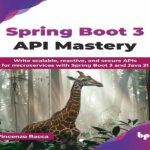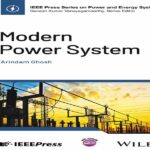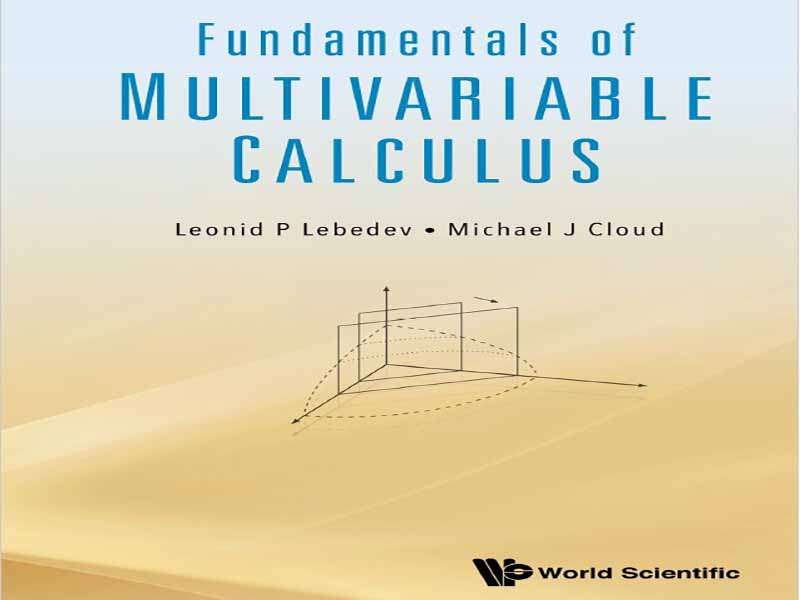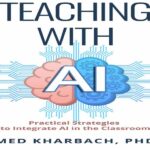- عنوان کتاب: Fundamentals Of Multivariable Calculus
- نویسنده: Leonid P. Lebedev
- حوزه: حساب دیفرانسیل و انتگرال
- سال انتشار: 2025
- تعداد صفحه: 314
- زبان اصلی: انگلیسی
- نوع فایل: pdf
- حجم فایل: 4.26 مگابایت
عصر ما انقلابی است. همانطور که ظاهر ماشینحسابهای دستی هنر محاسبات ذهنی و قوانین اسلاید لگاریتمی را مدفون کرد، بدون آنها یک قرن پیش به سختی میتوان تصور کرد که یک مهندس شاغل باشد، میتوان انتظار داشت بسیاری از هنرهای دیگر عقب نشینی کنند. اینها ممکن است شامل تبدیل های جبری و مثلثاتی دست و پا گیر، ارزیابی انتگرال های پیچیده، یا حل تحلیلی معادلات دیفرانسیل باشد. بخش خوبی از کتابهای درسی ریاضی مدرن، با وجود کاربردهای شبه مدرن، تکرار کتابهای درسی قرن نوزدهم است. اما رایانه ها قبلاً وظایف حل معادلات مختلف – هم جبری و هم دیفرانسیل – و ارائه نتایج عددی، تحلیلی و گرافیکی را بر عهده گرفته اند. مطالعه ترفندهای مورد نیاز برای ارزیابی انتگرال های ناجور و غیره به ریاضیدانان حرفه ای و فیزیکدانان نظری که نیاز به توسعه مطالعات ریاضی جدید دارند واگذار خواهد شد. یکی از نویسندگان این کتاب از یک مهندس عمران با مدرک کارشناسی ارشد پرسید: “شما از چه نوع ریاضیاتی در تمرین خود استفاده می کنید؟” پاسخ این بود: “یک ماشین حساب!” با توسعه مداوم وسایل الکترونیکی دستی، این پاسخ مطمئناً بیشتر و بیشتر معمولی خواهد شد. دانشجوی مهندسی یا علوم مدرن چه چیزی را باید بیاموزد؟ مطمئناً نحوه حل تمرینات مصنوعی آنها هرگز به کار نخواهند رفت. بلکه باید بفهمند که در بخشهای مختلف ریاضیات چه کاری انجام میشود و چرا. می توان به دانش آموزان ابزار داد، اما بدون درک درست استفاده از آنها غیرممکن است. ما نمیتوانیم بگوییم که برنامه درسی ریاضی برای دانشجویان مهندسی یا علوم چگونه باید تغییر کند، جز اینکه (الف) باید بخش خوبی از روشهای عددی را شامل شود، و (ب) ترفندهای دست و پا گیر قرن 18 و 19 باید حذف شود. اینکه چگونه می توان به هدف اصلی تربیت در هر چیزی که همان درک مطلب است رسید، مشخص نیست، اما باید این کار را کرد. این کتاب مقدمهای بر حساب چند متغیره (یا «حساب بردار») است. پیش نیازها محدود به حساب تک متغیره، جبر خطی و هندسه تحلیلی است. بنابراین یک دانش آموز در مورد حساب دیفرانسیل و انتگرال چند متغیره چه چیزی باید بداند و چگونه باید این دانش را به دست آورد؟ سوال دوم بسیار آسانتر است: ارائه باید واضح و با انگیزه باشد و تمرینها باید انجام شوند. درک مفهومی واقعی بدون فعالیت حل مسئله نمی تواند به دست بیاید، هرچند که تمرینات خود نیازی به فنی سنگین ندارند. فهرست موضوعات ما نیز کاملاً متعارف است: محدودیتها، پیوستگی، مشتقات جزئی، افراطی، عملگر nabla، انتگرالهای چندگانه، انتگرالهای خط و انتگرالهای سطحی. با این حال، تجربه کلاس درس ما با دانشجویان مهندسی منجر به انتخاب های خاصی در مورد تأکید و رویکرد شده است. دلایل تعدادی از این موارد در لیست زیر ذکر شده است.
Our age is revolutionary. Just as the appearance of hand-held calculators buried the art of mental arithmetic and logarithmic slide rules, without which a century ago one could scarcely imagine a practicing engineer, we can expect many other arts to recede. These may include cumbersome algebraic and trigonometric transformations, evaluation of complicated integrals, or the analytic solution of differential equations. A good portion of modern mathematical textbooks is repetition from 19th century textbooks, despite the inclusion of modern pseudo-applications. But computers have already taken over the tasks of solving various equations — both algebraic and differential — and provide numerical, analytic, and graphical results. The study of tricks required to evaluate awkward integrals, and so on, will be left to professional mathematicians and theoretical physicists who need to develop new mathematical studies. One of the authors of this book asked a masters-degreed civil engineer “What kinds of mathematics do you use in your practice?” The answer was, “A calculator!” With the continued development of handheld electronics, this answer will surely become more and more typical. What should the modern engineering or science student learn? Certainly not how to solve artificial exercises they will never apply. Rather they should come to understand what is done in various parts of mathematics, and why. Students can be given tools, but without understanding their proper use is impossible. We cannot say how the mathematical curriculum for engineering or science students should be changed, except that (a) it should include a good portion of numerical methods, and (b) the cumbersome tricks of the 18th and 19th centuries should be eliminated. It is not clear how to achieve the main goal of education in anything, which is understanding of the matter, but it should be done. This book is an introduction to multivariable calculus (or “vector calculus”). The prerequisites are limited to single-variable calculus, linear algebra, and analytic geometry. So what should a student know about multivariable calculus, and how is this knowledge to be acquired? The second question is by far the easier one: the presentation must be clear and well motivated, and exercises must be worked. Real conceptual grasp cannot come without problem solving activity, though the exercises themselves need not be technically burdensome. Our list of topics is also quite conventional: limits, continuity, partial derivatives, extrema, the nabla operator, multiple integrals, line integrals, and surface integrals. However, our classroom experience with engineering students has led to certain choices regarding emphasis and approach. Reasons for a few of these are noted in the following list.
این کتاب را میتوانید از لینک زیر بصورت رایگان دانلود کنید:
Download: Fundamentals Of Multivariable Calculus




































نظرات کاربران